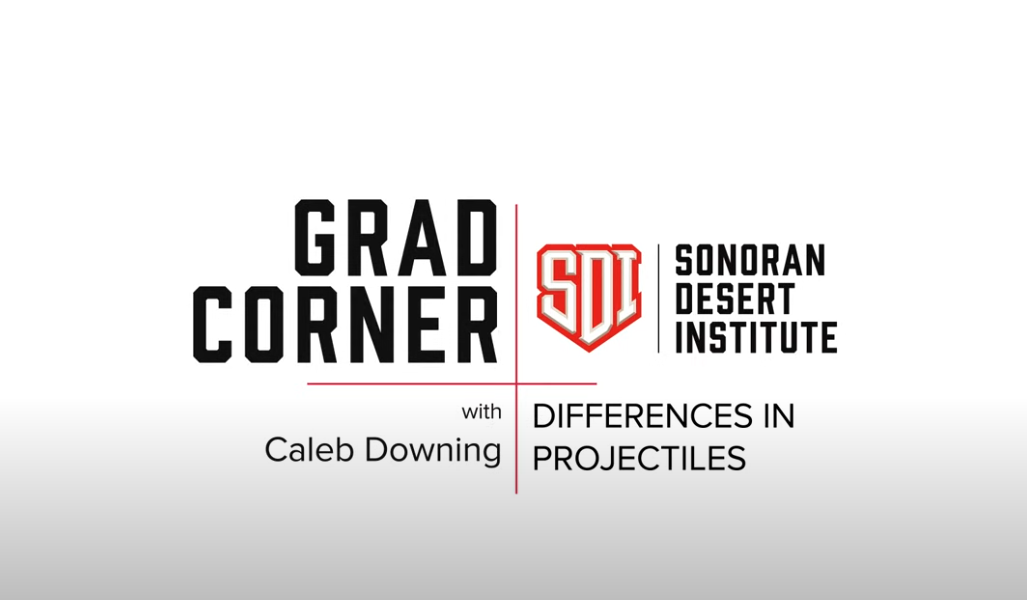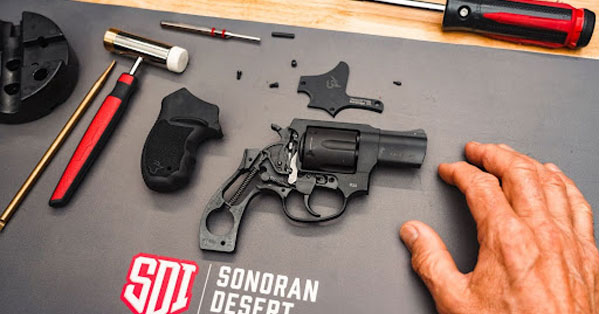
There are a lot of different parts of a cartridge out there. Components like the casing, primer, and powder all have an important role to play in making them go boom. But really, the cartridge’s projectile (the “business end”) is where the magic happens.
However, not all projectiles are right for the same job. Some bullets are designed to expand, or “mushroom,” on impact. Others are encased in a hard metal exterior, making them better at penetrating barriers and armor.
If this doesn’t make sense yet, don’t worry. We’ve got some help from SDI grad and notorious beard farmer Caleb Downing to break down different kinds of projectiles in his recent video.
Different Kinds of Projectiles
Caleb essentially breaks projectiles down into two different categories: expanding and non-expanding. He takes a look at expanding bullets first, since they’re — in his own words — the “fun stuff.”
Expanding Projectiles (Hollow Point Ammo, etc.)
Expanding projectiles are a sort of umbrella category that covers many different types of bullets. However, they all try to accomplish the same goal. When an expanding projectile hits a target, they collapse and expand outward.
The expansion of the projectile forces it to stop more quickly, imparting more force onto the target. The end result is an expanding wound channel, which makes these bullets better for engaging unarmored targets. As a result, expanding projectiles make the best hunting and self-defense applications.
Here are a few examples of expanding projectiles:
- Hollow Points (HP): Probably the most common type of expanding bullet. Hollow point bullets have lines and perforations carved into the projectile itself. When these projectiles hit a target, the bullet tears along those perforations like a piece of notebook paper. That causes a hollow point to (as Caleb says) “spread open like a beautiful flower.”
- Ballistic Tip: These types of projectiles are related to hollow points, but slightly different. Instead of just having a concave tip, ballistic tipped bullets have special inserts that help the projectile mushroom when it hits a target.
- Soft Point: Another related projectile to hollow points are soft points. These projectiles usually have a lead bullet with some kind of soft metal case. When they hit a target, they don’t collapse like a hollow point does. Instead, they flatten out to create a mushroom pattern.
Non-Expanding Projectiles (Full Metal Jacket Ammo)
Non-expanding projectiles are what people generally think of when someone mentions a “bullet.” These projectiles are made from a lead core with a hard metal case around it. This helps them keep their shape more readily than expanding projectiles do upon hitting a target.
Their lack of expansion makes non-expanding projectiles useful in target shooting. They’re also better for engaging thick-skinned or lightly armored targets, since they have better penetration abilities than expanding ammunition does.
Fun fact: Non-expanding projectiles are also the only ammo that soldiers can legally use in combat thanks to the Saint Petersburg Declaration of 1868 (not the Geneva Convention like some people would have you believe).
- Round Nose Flat Point: A bullet fully encased in a metal jacket, but with a flat tip that looks similar to a hollow point. Instead of mushrooming on impact, though, round nose flat points keep their shape. They’re generally used by target shooters.
- Wadcutters: Similar to the round nose flat point, wadcutters essentially just look like a cylinder. They’re designed to punch perfect, highly visible holes in a paper target and are also intended for target shooting.
- Full Metal Jacket (FMJ): Probably the most common type of projectile in the world today. FMJ ammo is what you likely take to the range on training days.
Learn More About Firearms at SDI
Do you want to get on Caleb’s level of firearm expertise? As an SDI grad, Caleb has studied under some of the best gunsmithing teachers in the country. Click here to see all the programs that SDI offers.


